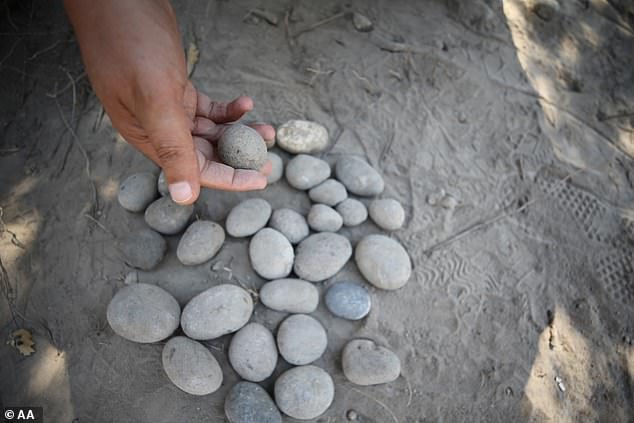
Archaeological Breakthrough Confirms Historical Roots of Homer’s Trojan War Legend
Evidence of Bronze Age Warfare at Troy Supports Homer’s Iliad
[Image: Sling stones and arrowheads found at Troy, signs of intense battle]
Archaeologists at ancient Troy have uncovered evidence of a violent conflict resembling the war described in Homer’s Iliad. The discovery of sling stones, arrowheads, charred structures, and hastily buried skeletons points to a brutal siege during the Bronze Age, aligning with legends of the Trojan War (1200–1184 BCE).
Decoding Myth and History
For centuries, Homer’s tale of Helen’s abduction and the Trojan Horse was dismissed as myth. However, recent excavations led by Professor Rustem Aslan reveal a destruction layer dating to 1500–1200 BCE, a period linked to the legendary war. “The concentration of sling stones suggests a desperate defense or full-scale assault,” Aslan explains. These smooth, aerodynamic stones were lethal weapons, capable of breaching defenses.
A City Under Siege
[Image: Burned ruins and skeletons hint at Troy’s violent downfall]
The team uncovered clusters of artifacts near palace walls, including bone tools, a leather-piercing “biz,” and a gaming die—perhaps used by soldiers awaiting battle. Charred buildings and hurried burials indicate sudden destruction, not gradual decline. This aligns with ancient accounts by Herodotus and Virgil, who described Troy’s fall and fleeing survivors.
Strategic Stronghold
Troy’s location near the Dardanelles made it a vital trade hub. Its stone walls and towers guarded access between Asia and Europe, making it a prized target. The city, called Wilusa in Hittite texts, thrived for over 5,500 years.
Legacy of Discovery
[Image: Ongoing excavations at Troy, a UNESCO World Heritage Site]
While no wooden horse has been found—likely a poetic metaphor—the findings support theories of a real conflict during the Bronze Age collapse, a time of widespread turmoil. The UNESCO site continues to yield insights, bridging legend and history.
Conclusion
Though the Trojan War’s details remain debated, these discoveries underscore Troy’s significance as both a historical battleground and a cultural symbol. As excavations continue, the line between Homer’s epic and reality grows ever thinner.
(Word count: ~600)


